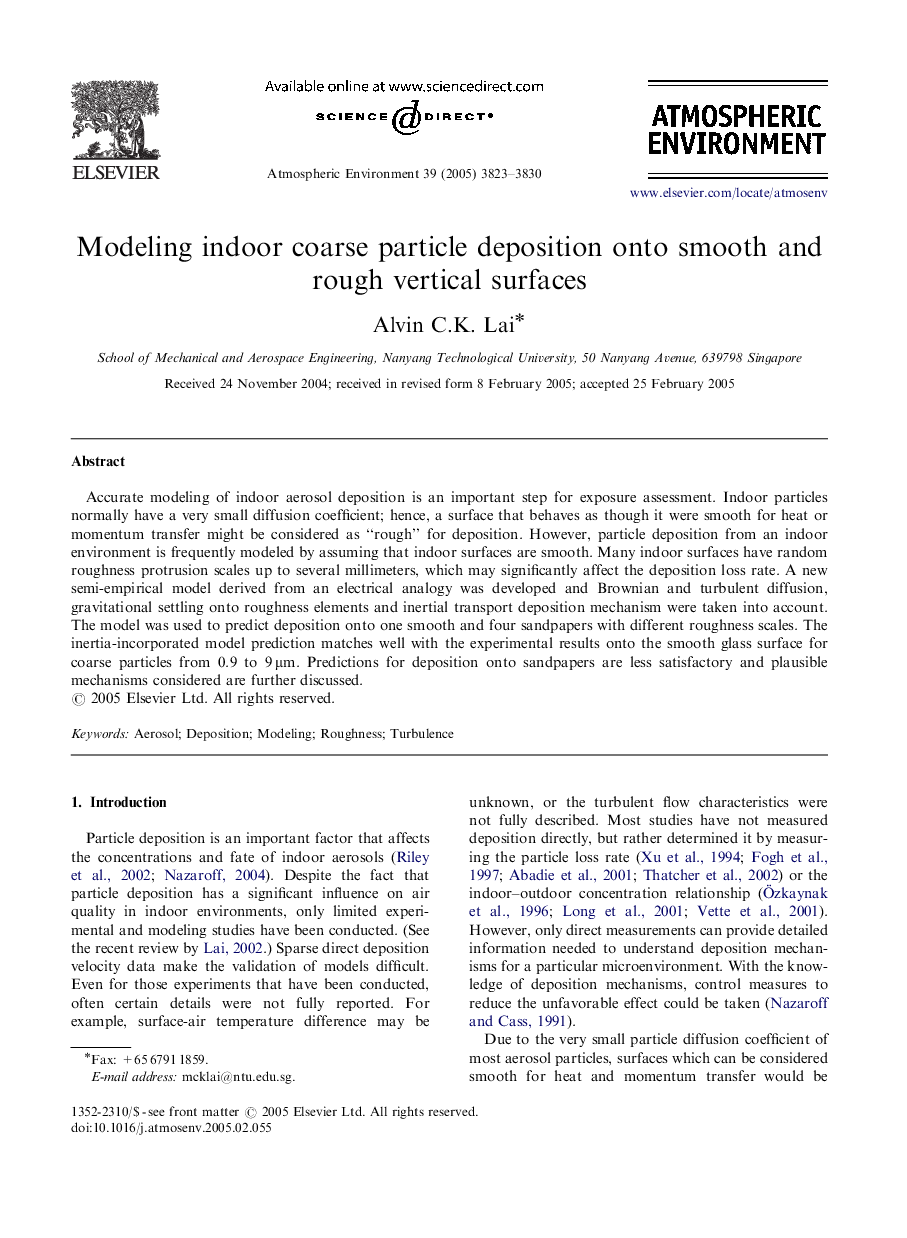| Article ID | Journal | Published Year | Pages | File Type |
|---|---|---|---|---|
| 4445357 | Atmospheric Environment | 2005 | 8 Pages |
Accurate modeling of indoor aerosol deposition is an important step for exposure assessment. Indoor particles normally have a very small diffusion coefficient; hence, a surface that behaves as though it were smooth for heat or momentum transfer might be considered as “rough” for deposition. However, particle deposition from an indoor environment is frequently modeled by assuming that indoor surfaces are smooth. Many indoor surfaces have random roughness protrusion scales up to several millimeters, which may significantly affect the deposition loss rate. A new semi-empirical model derived from an electrical analogy was developed and Brownian and turbulent diffusion, gravitational settling onto roughness elements and inertial transport deposition mechanism were taken into account. The model was used to predict deposition onto one smooth and four sandpapers with different roughness scales. The inertia-incorporated model prediction matches well with the experimental results onto the smooth glass surface for coarse particles from 0.9 to 9 μm. Predictions for deposition onto sandpapers are less satisfactory and plausible mechanisms considered are further discussed.
